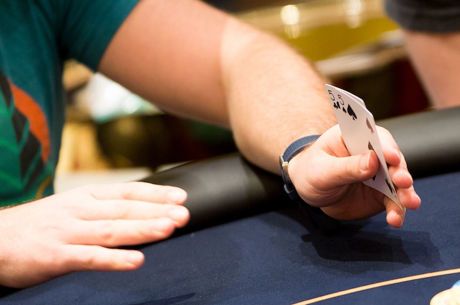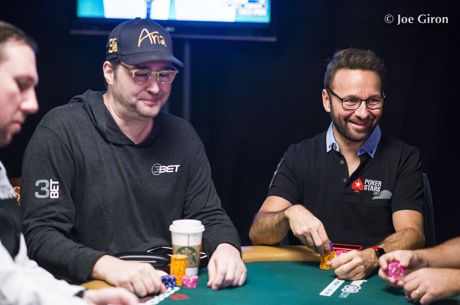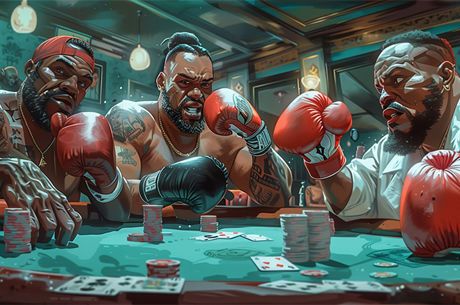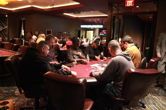Playing Top Pair Versus a Loose-Aggressive Opponent
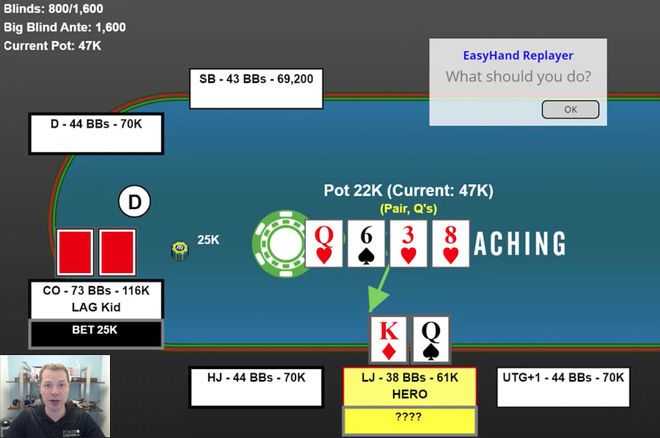
Today I'm reviewing another hand from the same $3,000 buy-in no-limit hold'em World Series of Poker event we've been discussing, this one illustrating the challenge of playing top pair from out of position against a particularly "LAG" or loose-aggressive opponent.
The hand came during the 800/1,600 level (with a 1,600 big blind ante), and with 70,000 in my stack I started the action from middle position with an opening raise to 3,800 holding K♦Q♠.
It folded to a loose-aggressive younger player in the cutoff who with about 150,000 to start three-bet to 9,000. Everyone folded back to me.
As I discuss below, my opponent's range was certainly wide. I chose to call his reraise. That said, I could see folding here as well, and certainly would fold, say, ace-ten or king-jack (if I didn't bluff four-bet, which I could do occasionally).
The flop came Q♥6♠3♥ to give me top pair, and I checked. My opponent checked behind, and the turn was the 8♥. Now I had to try to evaluate the significance of the cutoff's flop check in order to decide whether or not to bet or check the turn. Without any specific information about our opponent's tendencies, what is your inclination here — bet or check?
I ended up checking, and my opponent made a big bet of 25,000 — more than the size of the pot, and about 40 percent of my remaining stack. Now what?
Take a look at how I discuss this situation and see what I ultimately decided to do and how things played out.
As I say in the video, when the hand started to feel weird, I decided on a relatively cautious path by calling rather than shoving the turn. As it happened, I ended up surviving the hand when I might well have lost my stack had my opponent played it differently.
Jonathan Little is a professional poker player and author with over $7,000,000 in live tournament earnings. He writes a weekly educational blog and hosts a podcast at JonathanLittlePoker.com. Sign up to learn poker from Jonathan for free at PokerCoaching.com. You can follow him on Twitter @JonathanLittle.


